Roman marble version of a dying Gaul
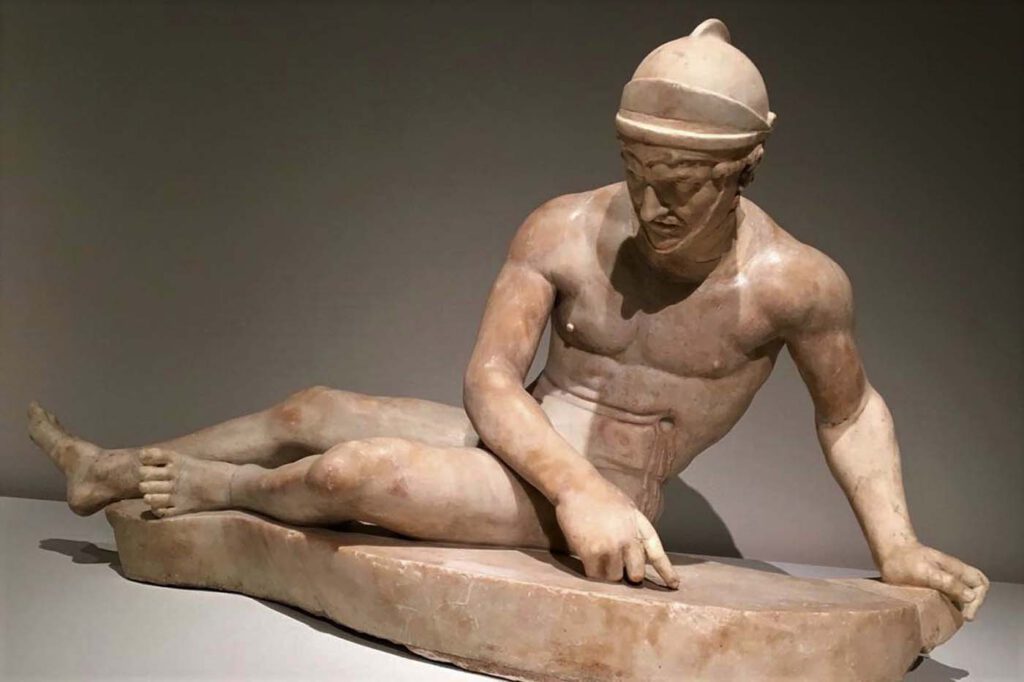
Roman marble version of a dying Gaul the original was part of a major sculptural display on the Athenian Acropolis of Attalid Greeks fighting Gauls in Asia Minor, Gods fighting Giants, Greeks fighting Amazons, and Greeks fighting Persians in the Persian Wars, c.200 B.C. Naples Dying GaulPhoto: Mary Harrsch, CC-BY-NC-SA-2.0 – In c. 200 BCE Attalos […]
Marble votive relief
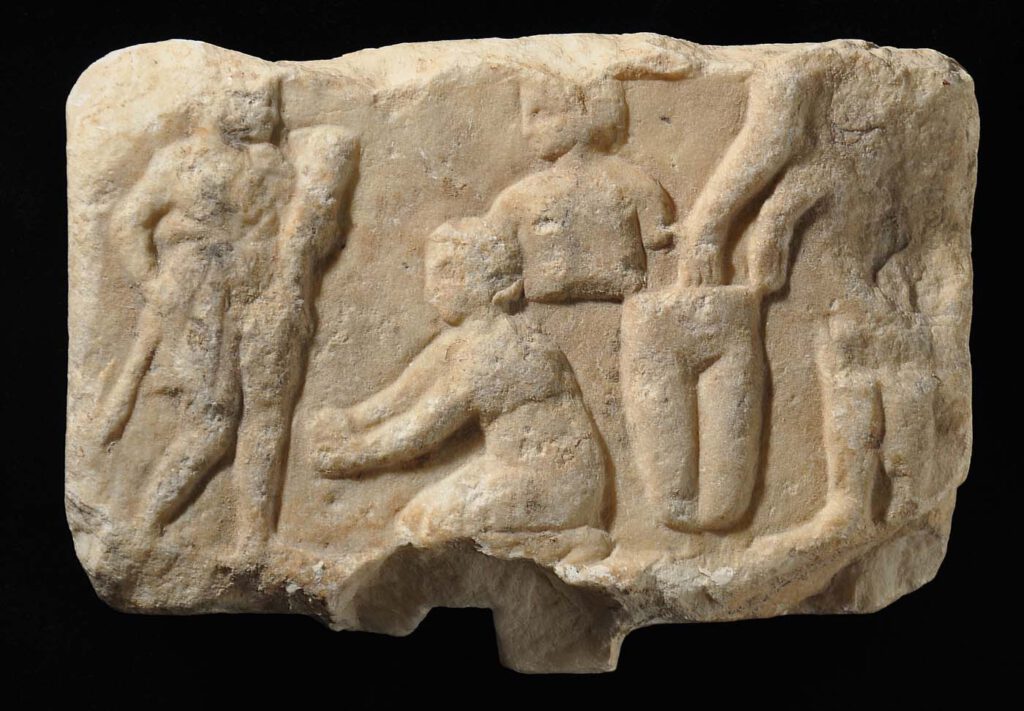
Marble votive relief showing votive body-parts c.480 B.C., fourth-century B.C. from Asklepieion at Athens Notwendige Votive Relief – Acr. 7232 © Acropolis MuseumPhoto: Constantinos Vasiliadis – A number of Greek sanctuaries, and in particular sanctuaries of healing god Asklepios, have yielded dedications of votive body-parts. These include arms and hands, legs and feet, eyes, ears, […]
Athenian red-figure cup attributed to Douris
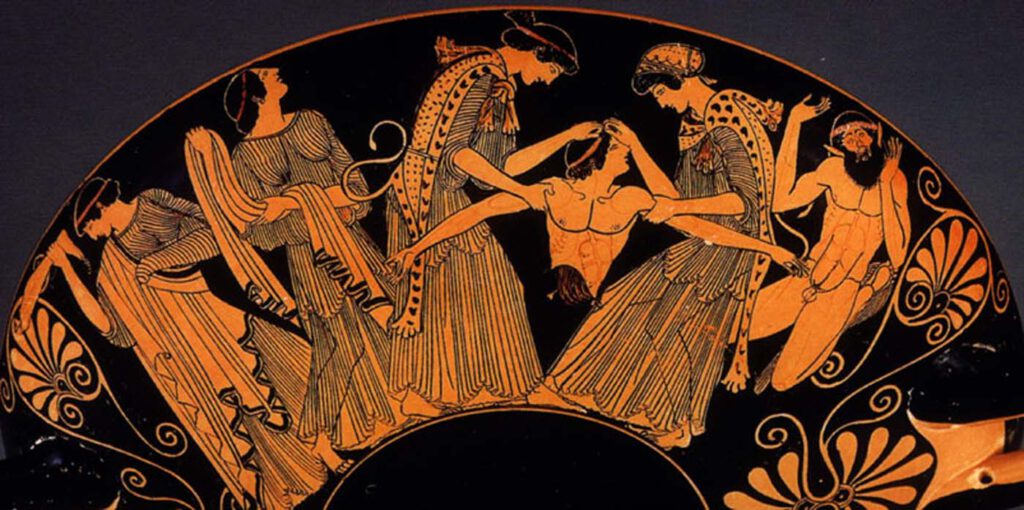
Athenian red-figure cup attributed to Douris death of Pentheus (detail), c.480 B.C. Cervetri, Museo Nazionale CeritePhoto: 2023@photo Scala, Florence, Kimbell Art Museum, Fort Worth, Texas /Art Resource, NY/Scala, Florence – The death of Pentheus is most familiar in the description given by Euripides in Bacchae. There a messenger speech describes how Pentheus’ mother, Agave, and […]
Athenian red-figure cup attributed to Oltos, examination of the liver of a sacrificial victim
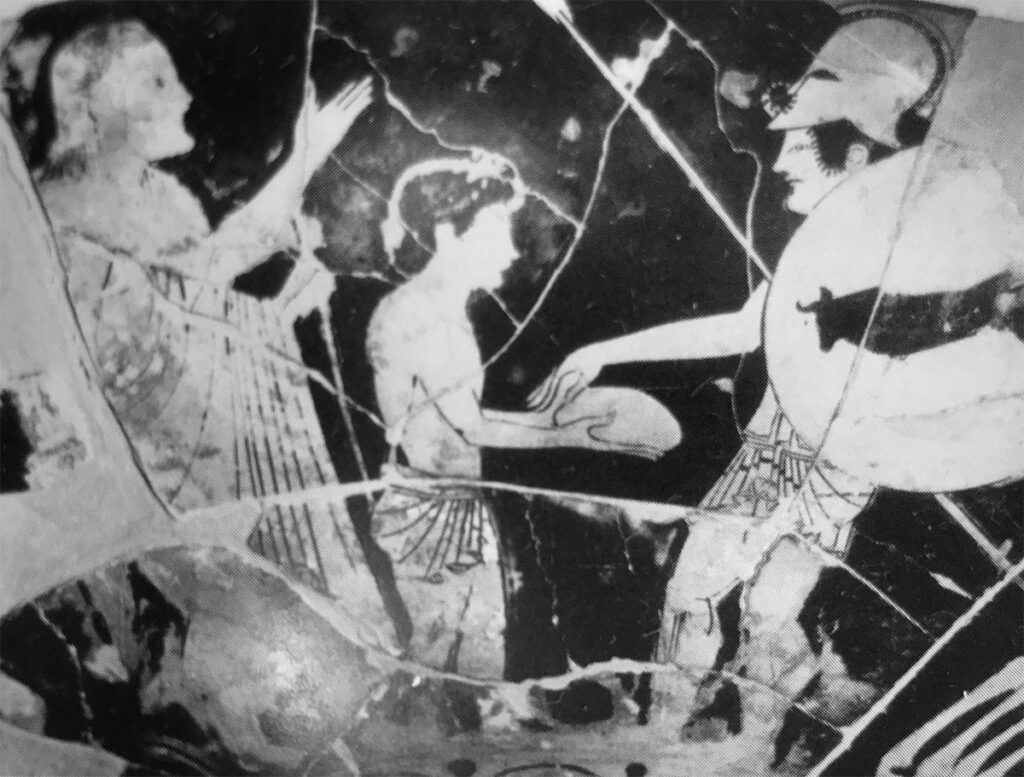
Athenian red-figure cup attributed to Oltos examination of the liver of a sacrificial victim (‘hieroscopy’), c.500 B.C.Cervetri, Museo Nazionale Cerite Photo: Jaime Ardiles-Arce – Representation of warfare is a feature of Greek painted pottery from the earliest figurative images from the eighth century BCE. In the second half of the sixth century and into the […]
Athenian red-figure krater signed by Euphronios
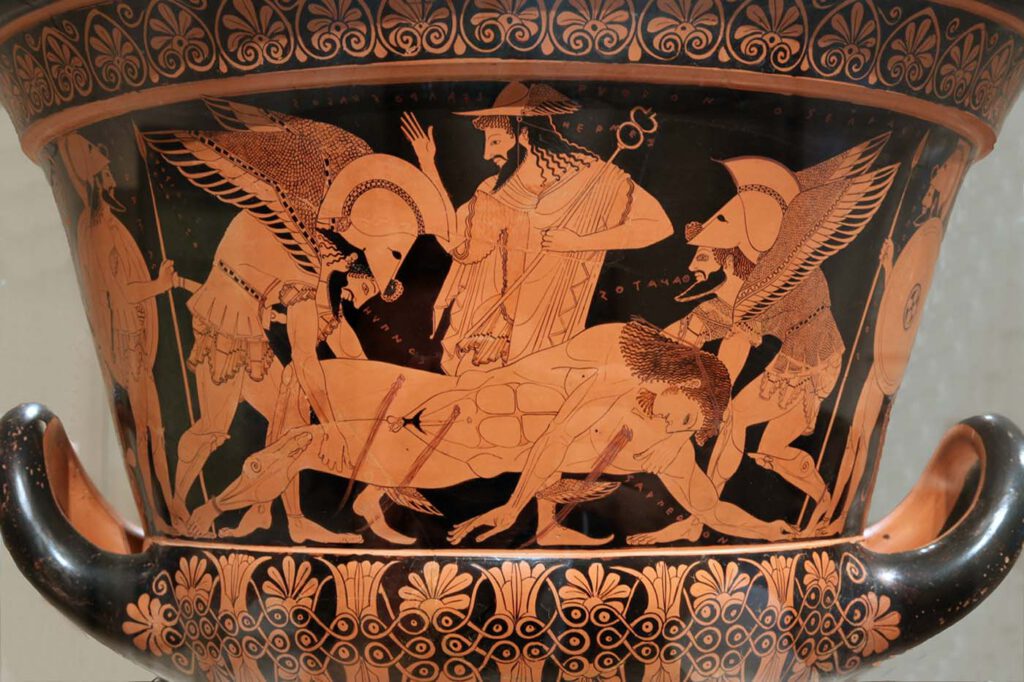
Athenian red-figure krater signed by Euphronios death of Sarpedon c.500 B.C. Cervetri, Museo Nazionale CeritePhoto: Jaime Ardiles-Arce, CC0 1.0 Universal (CC0 1.0) – This pot has become particularly famous because it was illegally excavated and then acquired by the Metropolitan Museum in New York. The Met. subsequently agreed that its acquisition had been inappropriate and the […]
